#house of the faun mosaics
Explore tagged Tumblr posts
Text

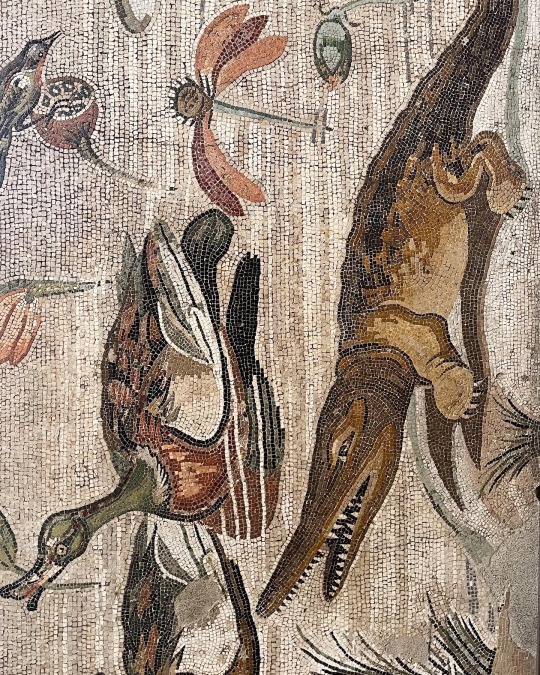
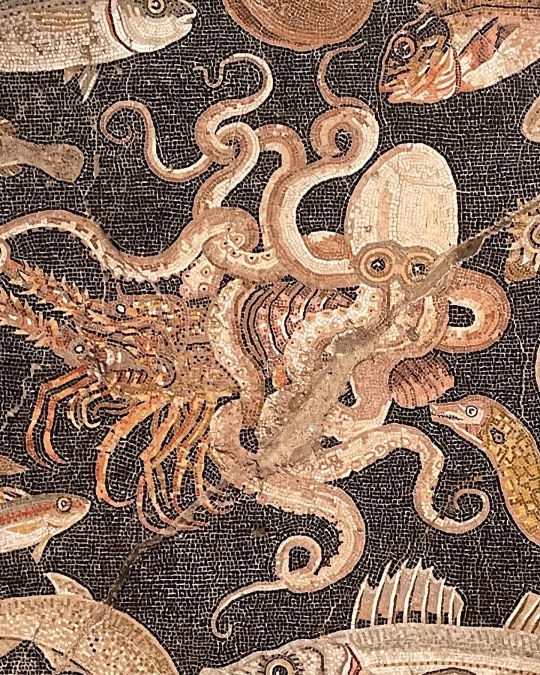

a dream come true to see the House of the Faun mosaics, from Pompeii, in the flesh
339 notes
·
View notes
Text
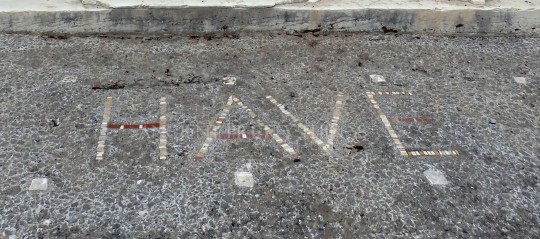

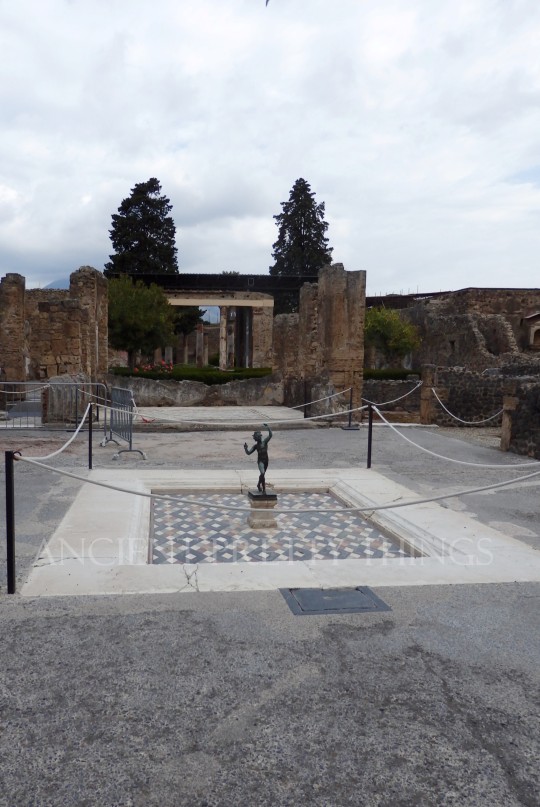
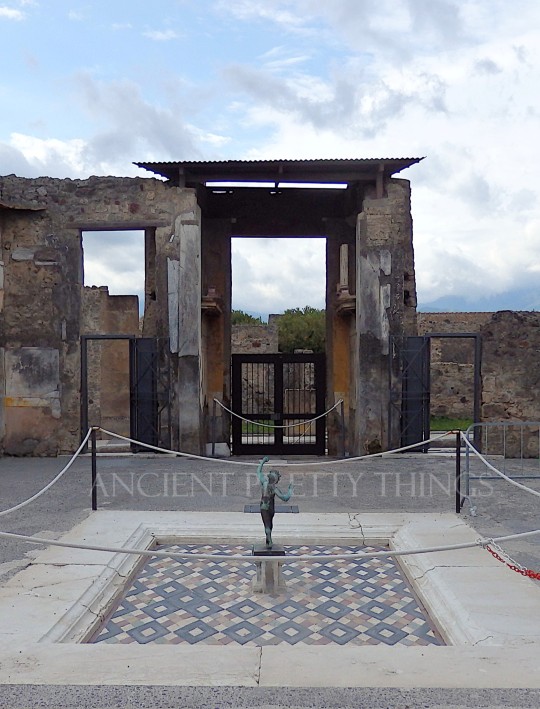
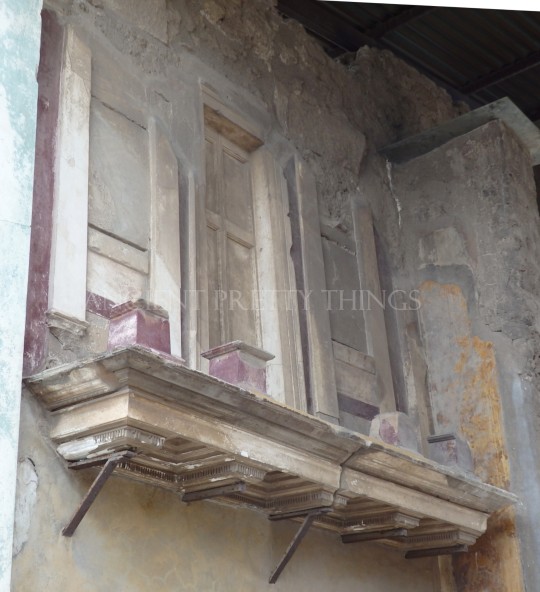

The fauces (entry hallway) and atrium of the House of the Faun, Pompeii with the eponymous statuette of the faun at centre stage.
[Photos are my original photography. Please do not save and repost without credit - reblogging is fine.]
219 notes
·
View notes
Photo
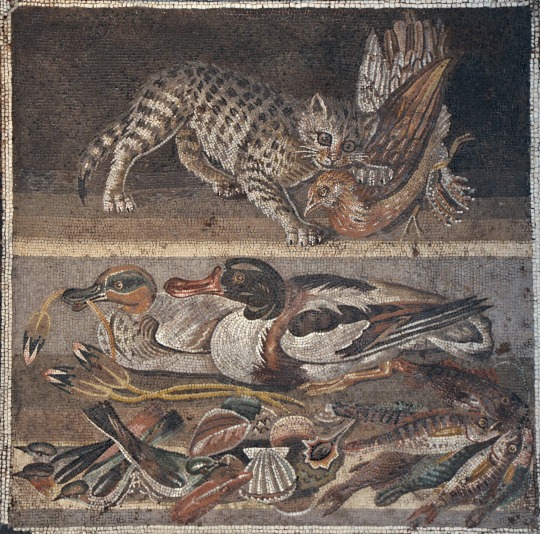
Mosaic depicting a cat with a partridge (above) and ducks, fish & shellfish (below),
From the House of the Faun, Pompeii, Italy,
Late 2nd Century BCE
Naples Archaeological Museum
#art#design#animals#feline#cat#duck#mosaic#partridge#fissh#pompeii#italy#history#roman#style#2nd century BCE#house of the faun#mythology
162 notes
·
View notes
Text
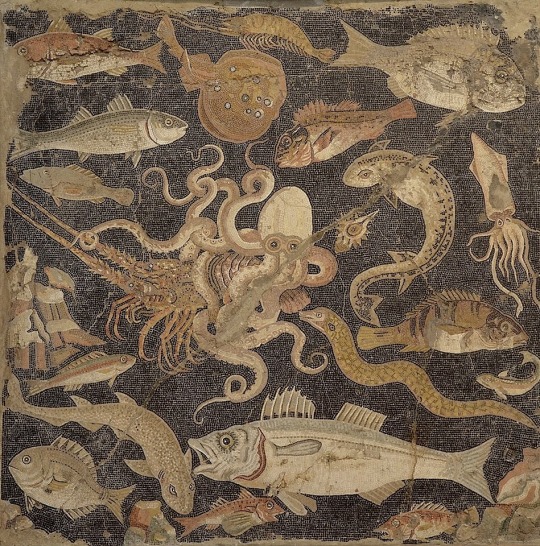
Nautical mosaic from the House of the Faun, Pompeii.
31 notes
·
View notes
Text
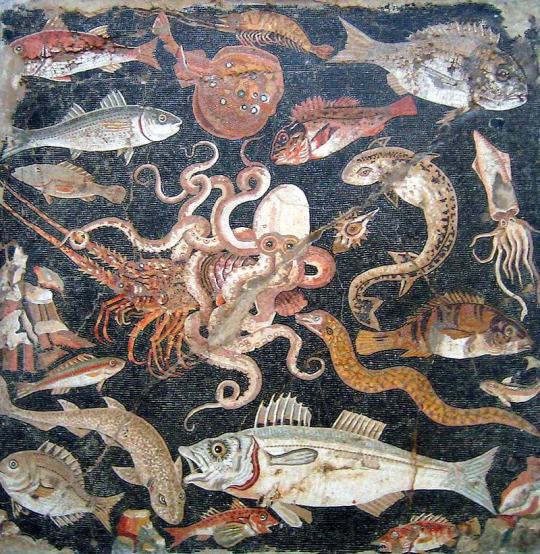
The Sea Creatures Mosaic, originally from the House of the Faun in Pompeii, is a stunning artwork displayed at the National Archaeological Museum in Naples
* * * *
“Creatives have reputations for floating in unreality. It’s true that what they espouse hints of magic and mystery, having little to do with what the larger world calls real. People like [this] are labeled ‘hermit,’ ‘madman,’ 'eccentric.’ Because they don’t live as others live, or accept the routine that makes the world go round, they are blamed, ridiculed, barely accepted as members of society. They are driven […] to greater extremes and further isolation, and rarely helped to do what they are born to do. Some do it anyway, and anyone who doubts the groundedness necessary for such a life should try it. To face each day supported, not by the dictates of a reliable outer framework, but by a chosen obedience to an inner necessity, one has to have one’s feet on the ground.” — Leif Anderson, from “Grounded,” Dancing with My Father (University Press of Mississippi, 2005)
+
POETRY / MAGGIE SMITH :: Stonefish ::
There are fish in the black trenches of the sea that look like rocks. Their poison shouldn’t trouble me. They are so deep, we’ll never touch. But I think of them. If it is paranoid to believe there is a trench in me the doctors haven’t dragged, a cave no one’s plumbed with light, then fine, I’m paranoid. But whatever plaques and tangles, whatever cells wait deadly with their terrible hunger must be disguised. You should know the most venomous fish lives in the shallows. It also looks like a rock.
#Sea Creatures#Sea Creature Mosaic#House of the Faun#Pompeii#Naples#quotes#Leif Anderson#Stonefish#Maggie Smith#poem#poetry
17 notes
·
View notes
Text

... mosaic ...
Detail of Alexander the Great (356-323BC), Alexander Mosaic, created in the 2nd century BCE, from the House of the Faun in Pompeii, reconstructed in the National Archaeological Museum, Naples
Today 323 BC Alexander the Great, Macedonian king, dies from either fever, excessive wine or suspected poisoning, at 32
By the age of thirty, Alexander created one of the largest empires of the ancient world, stretching from the Ionian Sea to the Himalayas.
8 notes
·
View notes
Text
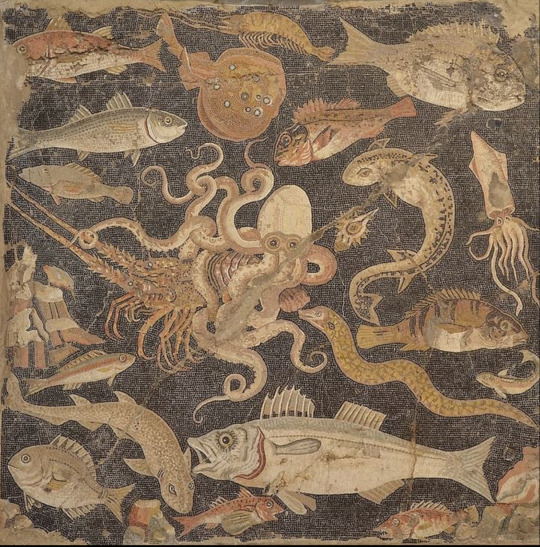
Mosaic with sea creatures, House of the Faun, Pompeii
7 notes
·
View notes
Text

I think I’ve probably been reading too much fanfic—because I’m not convinced those two are fighting…

#not fighting not wrestling but a third secret thing#octopus#lobster#mosaic#Pompeii#villa#house of the dancing faun
38 notes
·
View notes
Text
#MosaicMonday special for #WorldFrogDay:


A frog chilling on a lotus leaf surrounded by curious (hungry?) waterfowl in a Nilotic scene, Roman mosaic from the House of the Faun, Pompeii, 1st century BCE. Museo Archeologico di Napoli collection. [image: Wikimedia Commons]
#ancient art#Roman art#Italian art#European art#Pompeii#mosaic#House of the Faun#Museo Archeologico di Napoli#Nilotic scene#lotus#frog#amphibians#bird#birds in art#waterfowl#ducks#wetlands#Mosaic Monday#World Frog Day#animal holiday#animals in art
13 notes
·
View notes
Photo
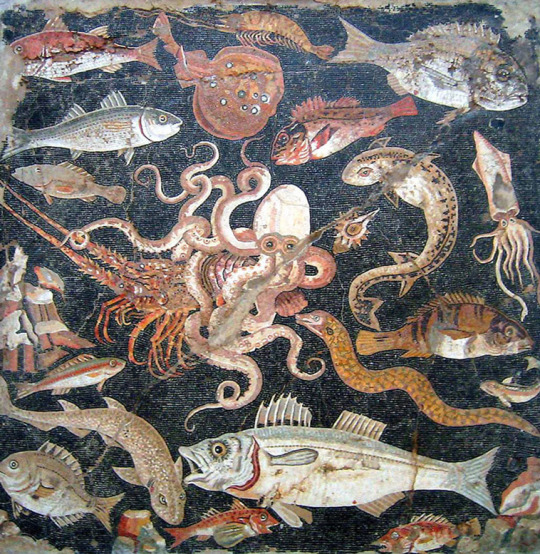
Sea Creatures Mosaic- National Archaeological Museum, Naples. Originally from the House of the Faun, Pompeii
#sea creatures mosaic#mosaic#art#national archaeological museum#naple#italy#history#pompeii#house of the faun
1 note
·
View note
Text

Mosaic from the House of the Faun, Pompeii
National Archaeological Museum of Naples
515 notes
·
View notes
Text
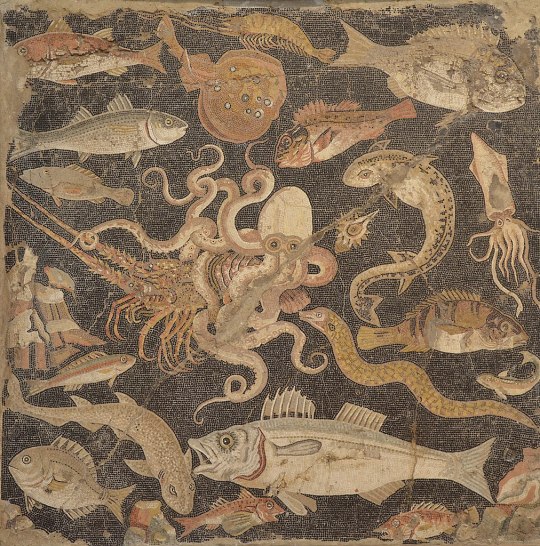
Mosaic with sea creatures from the House of the Faun, Pompeii.
#ancient rome#roman empire#ancient art#ancient history#ancient culture#ancient civilizations#pompeii#mosaic
1K notes
·
View notes
Text


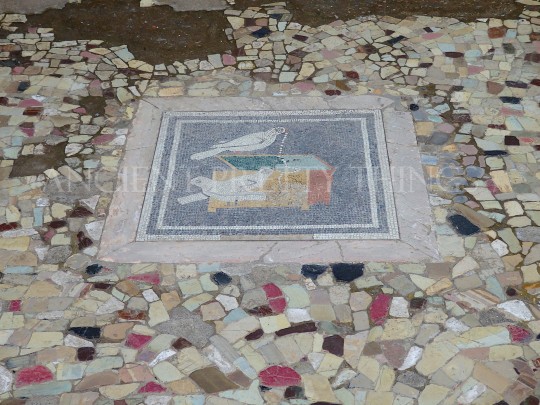

Mosaics at the House of the Faun, including the famous Alexander mosaic (albeit a replica.)
Pompeii.
[Photos are my original photography. Please do not save and repost without credit - reblogging is fine.]
#ancient rome#ancientprettythings#original photography#ancient art#mosaic#pompeii#house of the faun#ancient mosaic
249 notes
·
View notes
Text
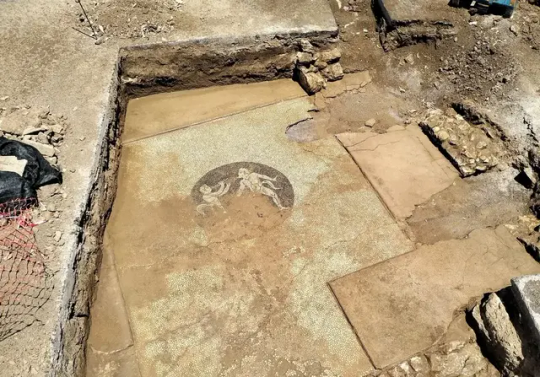
Archaeologists Discover Rare Pebbled Mosaic Featuring Naked Satyrs
Archaeologists excavating in ancient Eretria have discovered a pebbled mosaic floor featuring two naked satyrs.
Eretria was founded on the Greek island of Euboea, emerging as an important polis and trading centre from the 6th and 5th century BC.
The city was described as being involved in several significant historical events. It was listed by Homer in the Iliad as one of the Greek cities which sent ships to fight in the Trojan War.
During the Ionian rebellion against Persia in 499 BC, Eretria and Athens sent aid to their Ionian allies, resulting in the burning of Sardis, the capital of the Persian satrapy of Lydia.
Recent excavations by the Greek Ministry of Culture have unearthed a building near the sanctuary of Daphniforos Apollo, the “Quarter of the Panathenaic Amphorae” and the “House of the Mosaics”.
Within the building interior, archaeologists found a mosaic floor made from natural pebbles, with surviving walls on the south and east sides. The mosaic features a circular black medallion and two naked satyrs, a nature spirit with ears and a tail resembling those of a horse.
Satyrs were considered companions of the god Dionysus, which were thought to inhabit woodlands, mountains, and pastures. The Romans identified satyrs with their native nature spirits, fauns, often shown as a half-human and half-goat creatures.
Excavations also found a raised floor to the north and east sides of the room where reclining couches were likely placed. According to the archaeologists, the room dates from the 4th century BC and served as a banqueting space for celebrations and gatherings.
The area of the building was used as a cemetery during the early Christian era (5th to 6th century AD), where five tombs have been identified within the interior, and five more tombs adjacent to the exterior south wall.
By Mark Milligan.
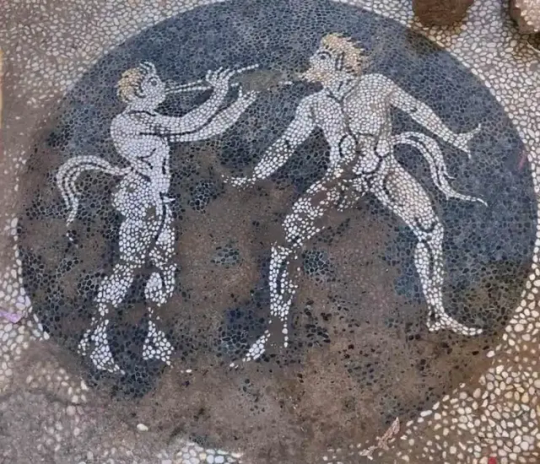
#Archaeologists Discover Rare Pebbled Mosaic Featuring Naked Satyrs#ancient Eretria#Greek island of Euboea#sanctuary of Daphniforos Apollo#mosaic#mosaic floor#ancient artifacts#archeology#archeolgst#history#history news#ancient history#ancient culture#ancient civilizations#ancient greece#greek history#greek art#ancient art
229 notes
·
View notes
Text


Situated in the House of the Faun, one of Pompeii's grandest residences, the Alexander Mosaic captures a pivotal moment of combat between two of antiquity's most famed figures: Alexander the Great and King Darius III of Persia. Unveiled to the world during excavations in the 19th century, this intricate masterpiece is believed to date back to around 100 BC.
Unlike many of its contemporaries which chronicled gods, myths, or benign depictions of daily life, the Alexander Mosaic chooses to bring forth the tempestuousness of battle, with its swirling chaos, the intensity of warriors, and the urgency of a combat's climax. The mosaic is not a mere static depiction; it throbs with dynamism and emotion, capturing the very essence of the turning point in the battle.
The artistry involved in this mosaic is nothing short of phenomenal. Each tessera, or the small tile used in the mosaic, is meticulously placed, creating a depth and realism that is astounding for its age. The contoured faces of Alexander and Darius are especially striking, with each expressing a world of emotion — Alexander's determination and Darius's dismay at the unfolding defeat.
379 notes
·
View notes
Text


Frieze of masks, House of the Faun, end of the 2nd century, beginning of the 1st BC. AD, Pompeii (city disappeared), National Museum of Archeology of Naples
The Roman houses of the aristocracy bear witness to the display of elite wealth, with a strongly marked social context. The domus, the typical Roman house, was not strictly a private place, but a hierarchical space, which became more and more private as the rooms progressed. The public part of the house played an important role in social rituals. Its plan was often centered around a large clearance space, called an atrium, which provided access to the other rooms in the house.
The domus was therefore a semi-public space, where the pater familias received clients, in a system of economic and social dependence in exchange for various assistance. It was not a place solely reserved for family, but a place where important social ties took place. In this context, luxury objects and decorations, such as mosaics or parietal art, held a preponderant place in the domestic sphere.
An emblematic example of this social and artistic arrangement in the house is the peristyle, which formed a central courtyard. Access to this courtyard was hierarchical, meaning that few people could admire certain works, such as the famous Alexander mosaic. This type of mosaic well represents the luxury of the time, with refined details such as garlands and theatrical masks, natural effects in the locks of hair, creating a subtle illusionism in shapes and colors.
Placed in the vestibule of the house, the mosaic was seen by a large number of visitors, thus participating in the presentation of the prestige and wealth of the house. The care taken in composition, symmetry and decorative illusionism underlines the artistic and social importance of these creations in the Roman domestic setting.
11 notes
·
View notes